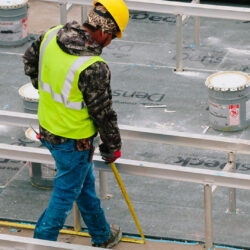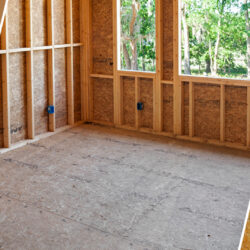In the residential sector, offsite construction involving modular and prefabricated components is used to build 2% of new single-family homes and 3% of multifamily housing.[1] But a number of construction projects are considering offsite construction methods to complete work faster, more efficiently and with less manpower. And as skilled labor shortages and real estate demands continue to squeeze the market, the industry appears to be poised for growth.
The market value for modular in new real-estate construction could reach $130 billion by 2030, according to 2019 research by McKinsey & Company.[2] Of that, more than $75 million could be captured by the residential market. Experts say offsite could be the solution to the work force and resource challenges plaguing the industry, among a host of other benefits. At the same time, innovations and technological advances in offsite home fabrication have yielded new home-building products and processes that are far superior to what was available even just a few decades ago.
The secret’s not out just yet in the U.S., where people still consider factory-made homes to be inferior quality. But experts believe that the combination of market demands and building tech innovations could soon reverse that narrative, and the U.S. could follow the lead of places like Denmark and Sweden, where offsite fabrication can account for 90% or more of new home construction.[3] Here are some of the key advantages that offsite construction can provide to homebuilding:
Real estate and labor relief
Real estate demand and the shortage of skilled labor could be the biggest drivers of offsite construction growth in the United States and Europe, as evidenced by history. Modular reached a high during the U.S. post-war boom between 1945 and 1955. It saw another surge during the labor crunch of 1997. Offsite construction involves automated processes that make it possible to complete projects more efficiently and with fewer skilled laborers. This makes it possible to build houses faster and supply more homes to the real estate market.
Time savings
Modular construction can speed the building process by as much as 50%, and can cut costs by up to 20%, according to McKinsey’s research. For an example, in Oakland, California, a 110-unit apartment building led by Holiday Development and built by its sister company, Factory OS, was constructed in 10 days.[4] According to the developer, a building of this size would typically take a year to construct.[5]
Lower costs
By creating less waste and offering faster production, offsite can potentially end up being less costly than traditional construction. It’s also a very efficient process, making it possible for building professionals to more precisely plan material types and quantities. With those benefits, offsite modular construction has the potential to deliver an annual cost savings of $11 billion in the U.S. and European residential market, including single-family and multifamily buildings, according to the McKinsey research.
Environmental protections
Projects can reduce carbon emissions by incorporating offsite construction instead of traditional building methods. Producing structural components in a factory instead of on a jobsite means not having to transport materials between the supply yard and jobsite. Modular construction can reduce the total number of deliveries to sites by 90% and decrease workers’ average travel distance by 75%.[6] Factories are also able to better control emissions and energy use than traditional jobsites.
Quality and climate control
Since fabrication and assembly takes place in a controlled environment, off-site construction allow for better quality assurance and more efficient processes such as more predictable costs and the ability to assemble the panels at the same time the structure’s core is being built. And since the process takes place in a climate-controlled environment, construction can take place even during unfavorable weather conditions.
Safety
Offsite facilities create safer working conditions by offering a controlled environment in which workers are exposed to fewer hazards, such as high scaffolds and harsh weather conditions, than they would encounter on a traditional jobsite.
Investors appear to be taking notice of the benefits of offsite construction. In the U.S., modular construction supplier Katerra in 2019 announced a round of funding that took its estimated overall value above $4 billion. It’s worth noting that the U.S. residential housing industry is one of the markets Katerra serves. Meanwhile, Facebook Inc. and Google’s parent company, Alphabet Inc., have each pledged a $1 billion investment in prefab housing for their employees in response to Silicon Valley’s severe housing shortage. These investments could signal to home building professionals that the market is ready for a new era in residential construction.
[1] https://www.nationalreview.com/magazine/2019/03/25/modular-housing-is-affordable-housing/
[2]https://www.mckinsey.com/~/media/mckinsey/industries/capital
[4] https://www.modular.org/documents/public/PrefabModularSmartMarketReport2020.pdf
[5] https://www.ktvu.com/news/housing-development-erected-in-west-oakland-in-10-days
[6] https://www.buildinggreen.com/feature/potential-prefab-how-modular-construction-can-be-green









